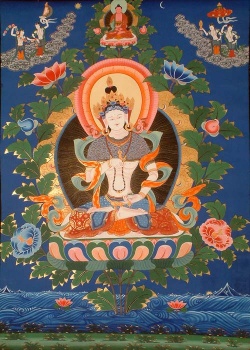Amala consciousness
amala-consciousness
阿摩羅識 (Skt amala-vijnana; Jpn amara-shiki )
Also, free-of-defilement consciousness or pure consciousness. The ninth and deepest of the nine consciousnesses. Amala means pure or undefiled, and vijnana means discernment. The eight consciousnesses set forth in the Consciousness-Only doctrine consist of the six consciousnesses (discernment by eyes, ears, nose, tongue, body, and mind), the mano consciousness, and the alaya -consciousness. To these the Summary of the Mahayana (Chin Shelun; Jpn Shoron) school founded by Paramartha (499-569), the Flower Garland (Hua-yen; Kegon) school founded by Tu-shun (557-640), and the T'ient'ai ( Jpn Tendai) school added a ninth consciousness, which is defined as the basis of all of life's functions. While the eighth, or alaya -consciousness contains karmic impurities, the amala consciousness is pure, free from all defilement, and corresponds to the Buddha nature.
The ‘unsullied consciousness’, a term used in Paramārtha's system of Yogācāra and equivalent in many respects to Buddha-nature or the tathāgata-garbha.
See also; nine consciousnesses.
